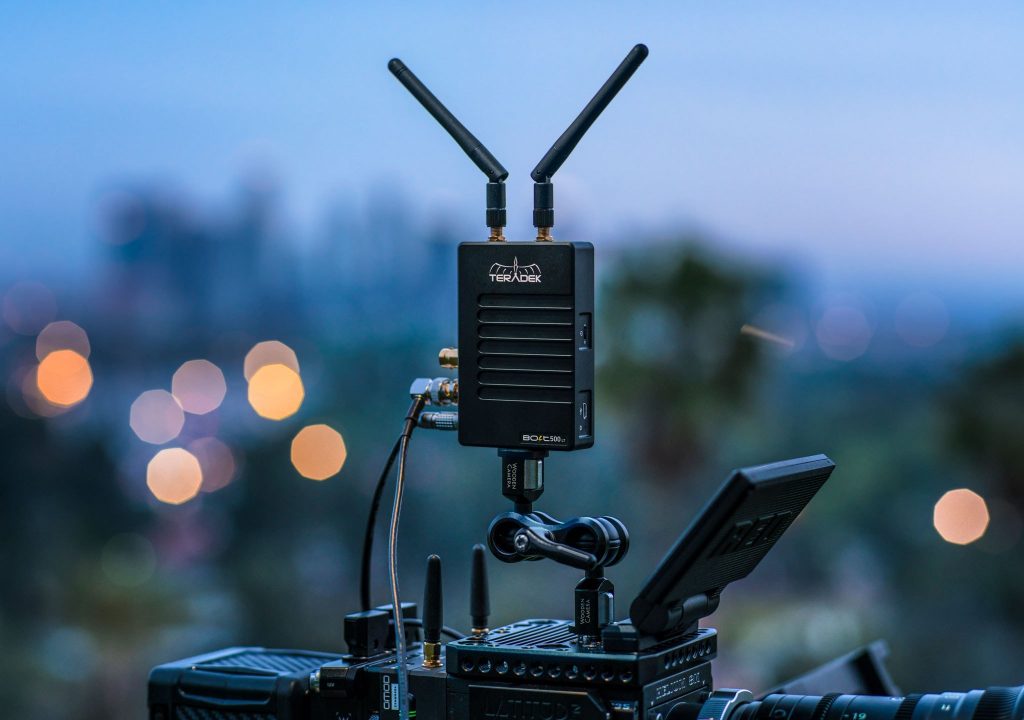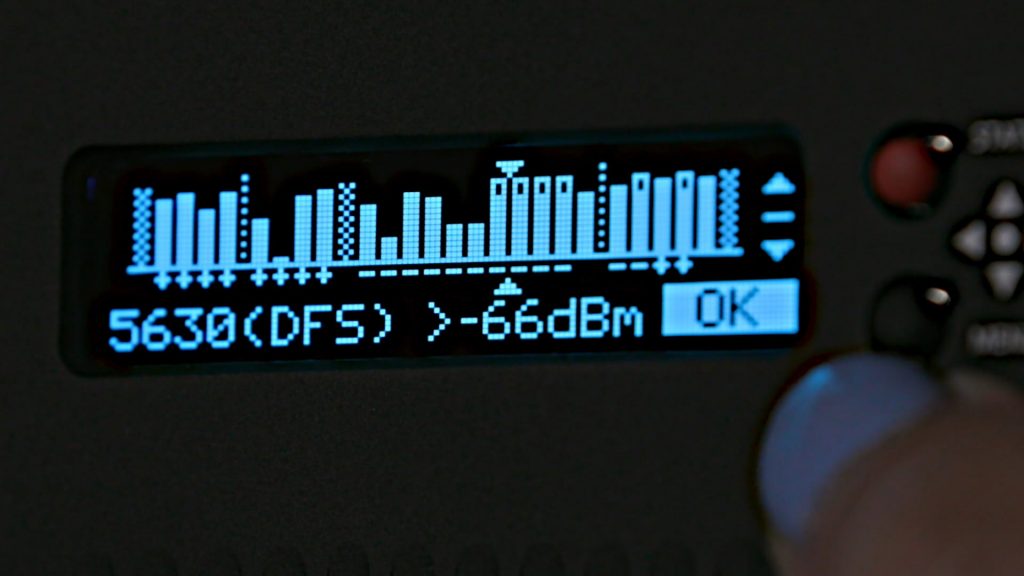Wireless Video best practice

NOTE: This article mainly focuses on wireless video, but all the topics will also apply to wireless audio and wireless lens control (LCS).
Going with a wireless video transmission is often seen as the more practical and superior solution compared to routing cables. On the other hand you will have to be aware of certain restrictions and best practices in order to have trouble-free operation or at least be able to troubleshoot if you encounter interference or signal loss.
Here are the most important facts and tips on how to achieve a successful wireless connection with your transmitters (TX) and your receivers (RX).
NOTE: In this article I will be mainly talking about Teradek wireless products because they represent a global industry standard for wireless video in the film industry and I also have good access to their devices. Everything should apply to most other wireless devices as well though.
Placement
The wireless transmitter should be mounted as high as possible on the camera so the antennas (attached or built-in on the top of most receivers) can transmit in all directions with as little interference as possible.

Transmitters and receivers should always have line-of-sight.
Antennas should always be as exposed as possible so they can send and pick up as much signal as possible.
Depending on your use, the wireless receiver should be mounted at the highest point of the set, for example mounted on a light stand. This will best ensure line-of-sight and you can run BNC cables to your DIT cart or director’s monitors.

If you and your director (carrying a director’s monitor with a neck strap) need to be mobile then you should try to have as little distance as possible and, again, line-of-sight between the transmitter and the receiver.
Mounting
Most professional wireless video transmitters and receivers are built inside an aluminum housing. Heat is the worst enemy of any electronics and aluminum is perfect for transferring heat. The aluminum housing helps transfer the heat to the outside of the transmitter or receiver and keeps the electronics functioning at optimal temperature.
As a result the housing can get pretty hot. If you have ever tried mounting a motor controller for your wireless lens control or a wireless video transmitter using velcro it is likely that it didn’t work that well because the heat coming off the transmitter softened the adhesive of the velcro and it didn’t stick anymore.

Most wireless transmitters and receivers feature 1/4″ or 3/8″ mounting holes so you can use arms or ball heads to securely attach the boxes to your rig. If you’re into it you can also use zip ties or bongo ties are also often used.
Distances and Interference
When pairing and operating wireless connections you might think that the closer together you place the transmitter and receiver the better they can communicate. This is only partly true. When you are trying to connect or pair a transmitter and receivers, Teradek recommends that you should not get them closer together than 3 – 4 meters (10 – 15 feet) otherwise the devices will cause interference with each other.
Teradek also notes that
the use of external / directional antennas cannot increase the range on the Bolt — they are always limited to the maximum distance of the model.
So if you use a Teradek Bolt 500, your maximum distance will always be 500 feet (152 meters).
If you use wireless video, wireless lens control and audio on the same rig Teradek has the following advice:
A general rule of thumb when using RF transmitting/receiving devices (audio, video, etc.) in close proximity is that the greater the separation between devices, the better the chances of operation without interference.
Sources of Interference
The more wireless devices are in your proximity the more likely it is that the waves of alle the devices either amplify or actually take each other out.
Wireless waves are able to penetrate solid materials. When going through walls or furniture the wireless signals get weaker or are absorbed and lose parts of their energy. The extent of the absorption or weakening depends on the properties of the material and the humidity of the material also plays a role.
Dry wood, glass or plaster for example barely weaken wireless signals. Water and bricks already start to degrade your signals. Concrete and reinforced concrete (with metal bars) will degrade signals considerably. Metal refracts wireless signals and interferes the most.
One of the most common sources of wireless interference is water. The human body (every member of your crew – except those cyborgs I’ve been hearing about lately) consists of roughly 70% water. Even if you are standing on a wide open field in the middle of the alps and you have line-of-sight, springs, creeks, rivers, moss, trees, etc. can and will interfere with your wireless signals.
Helpful Tools
Since there are two main wireless frequency bands available to the public at the time of writing – 2,4 GHz and 5 GHz – your chances of finding a frequency that can send your signals are very good.
Spectrum Analyzers are devices that scan your environment for available frequency bands and their frequencies and display how congested the individual frequencies are. Ideally you can set the channel of your professional wireless gear to a less used frequency and have a good signal transmission (see the operation manual of your wireless system to find out which channel transmits on what frequency).
Teradek includes a very handy “Bolt Spectrum Analyzer” software feature in their Bolt transmitters. This feature displays how heavily used all the frequencies of the entire 5GHz frequency band are (Teradek Bolts transmit on the 5GHz band). Now you can choose yourself which channel to use instead of relying on the automatic spectrum analyzer feature most wireless systems use. This will give you more control and peace of mind because you can also set a backup frequency in case your first pick gets too crowded after all.

Sources
https://teradek.com/blogs/articles/5-best-practices-for-getting-the-most-from-your-bolt
https://support.teradek.com/hc/en-us/articles/222873648
https://teradek.com/blogs/articles/how-to-a-rundown-of-the-bolt-spectrum-analyzer